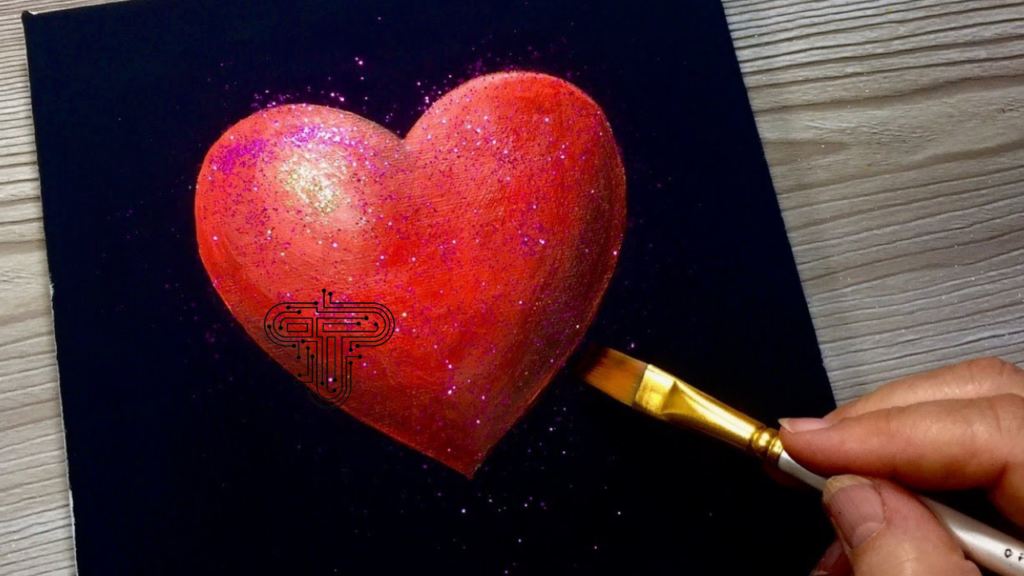BLOG
The Techniques Behind Drawing:yw-tzomiaao= heart – Capturing the Heart

Art has always been a window into the soul, allowing individuals to express emotions, ideas, and experiences through creative means. Among the various styles of modern abstract art, drawing:yw-tzomiaao= heart stands out for its ability to convey deep feelings through the depiction of the heart. In this form of art, the heart transcends its anatomical significance, becoming a symbol of love, vulnerability, and the human experience. Artists use a combination of abstract techniques to transform this universal symbol into a powerful medium for emotional expression.
What is The Techniques Drawing:yw-tzomiaao= heart?
Before diving into the techniques, it’s important to understand what Drawing:yw-tzomiaao= heart represents. The term “Yw-Tzomiaao” might sound unfamiliar, but its meaning is deeply rooted in modern abstract art. It comes from a blend of various cultural influences and art traditions, with a focus on abstract expressionism.
Drawing:yw-tzomiaao= heart represents a connection between abstract forms and the emotional depth of the heart. The heart is depicted in various abstract ways, allowing the artist to express complex feelings and provoke thoughts in the viewer. The drawing becomes more than just an image—it becomes a conversation about the essence of being human.
Abstract Line Work in Drawing:yw-tzomiaao= heart

At the foundation of Drawing:yw-tzomiaao= heart lies the use of abstract line work. Artists use lines to create shapes that represent the flow of energy and emotion. These lines often do not adhere to strict patterns, but rather, they flow freely to reflect the dynamic nature of human feelings. Curved, jagged, or wavy lines come together to form intricate designs, allowing the viewer to experience the drawing’s emotional depth.
The interplay of bold and delicate lines is another key feature in this style of art. By varying the thickness of the lines, artists add layers of meaning to the piece. Bold lines may signify strength, determination, or intense emotion, while lighter strokes can represent vulnerability, softness, or introspection. This combination gives the artwork a sense of movement and energy, guiding the viewer’s eye through the composition.
Techniques for Capturing the Drawing:yw-tzomiaao= heart
At the core of Drawing:yw-tzomiaao= heart is abstract line work. Artists use lines to create forms that represent movement, energy, and life. These lines can be simple or complex, thin or thick, and they guide the viewer through the drawing in a fluid motion.
Free-flowing Lines: These lines represent the rhythm of life and emotions. Artists often use long, curving lines to symbolize the continuous flow of feelings.
Interconnectedness: Lines often connect different parts of the drawing, representing how emotions are linked. For example, the heart in the drawing may be connected to abstract shapes that symbolize love, pain, or joy.
Bold vs. Delicate Lines: Some areas of the drawing may have bold, assertive lines, while others may have light, delicate strokes. This contrast adds depth and allows the artist to highlight different emotions.
Symbolic Representation of the Heart

The heart is the central symbol in drawing:yw-tzomiaao= heart. Artists depict the heart using both traditional and abstract techniques, giving it various forms while maintaining its emotional significance.
Traditional Heart Shapes: Some artists may start with the traditional heart shape that everyone recognizes. However, the heart is often abstracted or distorted to show different emotional states.
Abstract Forms: The heart might be represented by geometric shapes or irregular forms, symbolizing the complexity of human emotions. These abstract forms allow the viewer to interpret the heart in different ways, depending on their own emotional experiences.
Integration with Other Symbols: In many drawing:yw-tzomiaao= heart, the heart is integrated with other symbolic elements like circles, squares, or waves. These additional symbols represent different aspects of the human experience, such as unity, stability, or change.
Symbolic Representation of the Drawing:yw-tzomiaao= heart
The heart plays a central role in drawing:yw-tzomiaao= heart, often serving as the focal point of the artwork. Artists use both traditional and abstract methods to depict the heart, allowing them to express a range of emotions. The heart might be drawn as a simple, recognizable shape, or it might be broken down into geometric figures that invite interpretation. These different representations encourage viewers to engage with the artwork on a deeper emotional level.
The Role of Color and Texture
Color and texture are essential tools for artists working within the drawing:yw-tzomiaao= heart framework. By carefully selecting colors, artists can evoke specific emotions and create a mood within the piece. For instance, a monochromatic palette might be used to emphasize a singular emotional theme, while a mix of vibrant colors can suggest a broader range of feelings. Each color carries its own emotional weight—red for passion, blue for calmness, or yellow for hope—helping to shape the viewer’s response to the artwork.
Texture, too, plays a significant role in the drawing process. Through techniques like cross-hatching, stippling, or layering, artists add a tactile dimension to their work. This texture can make the drawing feel more alive, inviting the viewer to explore its surface and discover new details. Rough textures may symbolize emotional turmoil, while smooth areas can offer a sense of peace or clarity. Together, color and texture work hand-in-hand to enhance the emotional resonance of the drawing:yw-tzomiaao= heart.
Evoking Emotional Responses drawing:yw-tzomiaao= heart
One of the most powerful aspects of drawing:yw-tzomiaao= heart is its ability to evoke strong emotional responses from the viewer. The abstract nature of the artwork encourages introspection, inviting individuals to interpret the piece through the lens of their own experiences. As they engage with the drawing, viewers may find themselves reflecting on love, heartbreak, joy, or sorrow, depending on the emotions conveyed by the artist.
The universal symbol of the heart allows for a wide range of interpretations, making the artwork accessible to people from diverse cultural backgrounds. Whether the heart is depicted as whole, fractured, or abstracted, its symbolic power remains intact. This emotional resonance is what makes drawing:yw-tzomiaao= heart such a captivating art form—it bridges the gap between artist and viewer, creating a shared experience rooted in human emotion.
The Creative Process drawing:yw-tzomiaao= heart
The process of creating drawing:yw-tzomiaao= heart often begins with a sense of inspiration. Artists draw from personal experiences, nature, music, or abstract concepts, translating these inspirations into visual form. The heart, with its rich symbolic history, serves as a natural starting point for many of these creations. Artists may begin with spontaneous sketches, allowing their emotions to guide the flow of their lines and shapes.
Once the initial sketches are complete, the artist refines the drawing, paying closer attention to detail and structure. Colors, textures, and additional symbols are added, bringing the drawing to life. Throughout this process, the heart remains a central focus, even as it becomes more abstract. The final product is a reflection of both the artist’s internal world and the broader emotional themes they wish to convey.
Digital Advancements in Drawing:yw-tzomiaao= heart
With the rise of digital tools, artists working in the Yw-Tzomiaao style have expanded their creative possibilities. Digital platforms allow for greater experimentation with line, color, and texture, enabling artists to push the boundaries of traditional techniques. In this digital realm, Drawing: Yw-Tzomiaao = Heart takes on new forms, as artists can manipulate their work in real-time, creating layered compositions that would be difficult to achieve with traditional media.
Moreover, digital art has allowed for the global dissemination of drawing:yw-tzomiaao= heart works. Through social media and online galleries, artists can share their creations with a broader audience, fostering a sense of connection among viewers from around the world. This digital shift has democratized the art world, giving more artists the opportunity to showcase their unique interpretations of the heart.
Public Art and Community Impact drawing:yw-tzomiaao= heart
Drawing:yw-tzomiaao= heart has also made its way into public spaces, where large-scale murals and installations bring the art form to life on a grand scale. These public artworks transform urban environments, offering a moment of reflection for passersby. The heart, in its abstract and symbolic form, resonates with viewers on a personal level, creating a sense of shared experience and community.
Murals featuring drawing:yw-tzomiaao= heart elements have become a popular way for artists to engage with their communities. These pieces often incorporate local cultural symbols, blending the universal theme of the heart with the unique identity of the community. As a result, these public artworks serve not only as aesthetic enhancements but also as meaningful contributions to the cultural landscape.
Also Read: Drawing:iek1gnzs5p4= Dog-The Ultimate Guide for Beginners
Conclusion
drawing:yw-tzomiaao= heart represents a unique fusion of abstract expression and emotional depth. Through the use of abstract line work, symbolic representation, color, texture, and emotional resonance, artists are able to capture the essence of the heart in all its complexity. Whether created through traditional or digital means, this art form continues to evolve, offering both artists and viewers a powerful medium for exploring the intricacies of human emotion.
By focusing on the heart as a central symbol, drawing:yw-tzomiaao= heart transcends cultural boundaries, inviting viewers to engage with their own emotional experiences. As this art form grows in popularity, its impact on both the contemporary art world and public spaces continues to expand, reminding us of the universal power of art to connect, heal, and inspire.
FAQS
1. What is drawing:yw-tzomiaao= heart?
Drawing:yw-tzomiaao= heart is a unique form of abstract art that focuses on the symbolic representation of the heart. It combines intricate line work, shapes, and colors to evoke deep emotional responses from the viewer.
2. What techniques are used in Drawing:yw-tzomiaao= heart?
Artists use techniques like abstract line work, symbolic shapes, and vibrant colors. They also add texture through cross-hatching or layering to create emotional depth in the artwork.
3. How does the heart symbol appear in this style of drawing?
The heart can appear in various forms, ranging from its traditional shape to abstract geometric figures. The heart is often used to represent emotions like love, vulnerability, or passion.
4. What emotions does Drawing:yw-tzomiaao= heart typically convey?
This style of drawing often conveys a range of emotions, including love, sorrow, joy, or introspection. The abstract nature allows viewers to interpret the artwork based on their personal emotional experiences.
5. Can this form of drawing be created digitally?
Yes, digital tools have greatly expanded the possibilities of Drawing:yw-tzomiaao= heart. Artists can experiment with line work, color, and texture more freely using digital platforms, often enhancing the complexity of their creations.
6. How does color play a role in Drawing:yw-tzomiaao= heart?
Color is a key element, helping to set the emotional tone of the artwork. For example, red may symbolize passion, blue may represent calmness, and a mix of colors can evoke a broad spectrum of emotions.
7. What makes Drawing:yw-tzomiaao= heart different from other forms of abstract art?
Its focus on the heart as a central symbol sets it apart. While it embraces abstract expression, the heart remains a universally recognizable theme that allows for personal and emotional interpretation.
8. Can viewers interpret Drawing:yw-tzomiaao= heart in their own way?
Yes, one of the strengths of this form of art is its abstract nature, which encourages individual interpretation. Each viewer may experience different emotions or thoughts based on their personal connection to the artwork.
9. Is Drawing:yw-tzomiaao= heart displayed in public spaces?
Yes, large-scale murals and public installations featuring this style have become popular. These works of art bring emotional expression to public spaces, encouraging community engagement.
10. How can I start creating Drawing:yw-tzomiaao= heart?
Begin by experimenting with free-flowing lines, symbolic shapes, and varied colors. Focus on representing emotions through abstract forms, and let your creativity guide you in creating meaningful, heart-centered drawings.











